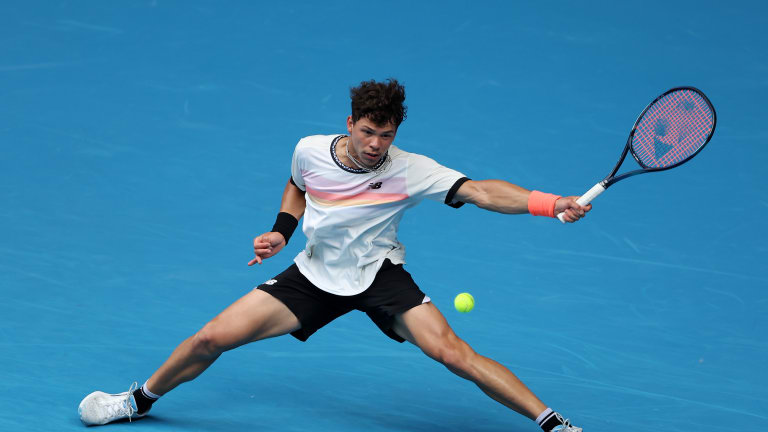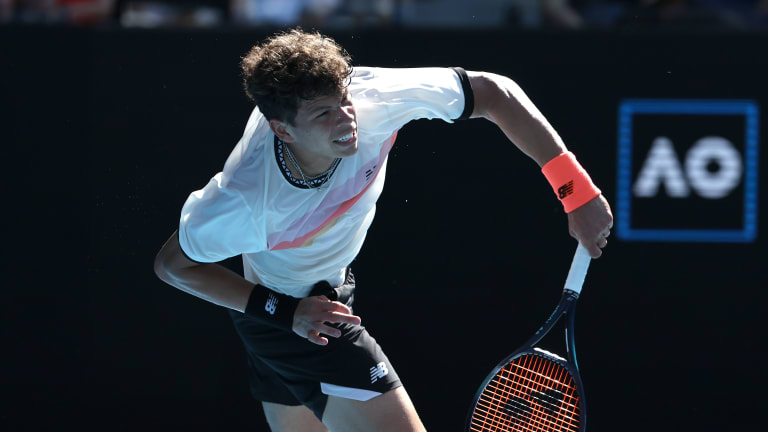Clay is months away, but Ben Shelton is ready
By Feb 07, 2023Social
Ben Shelton is playing "The Long Game" in new YouTube docuseries
By Dec 10, 20252025 Year In Review
ATP Match of the Year honorable mentions: Learner Tien denies Medvedev in Melbourne epic and more
By Dec 06, 20252025 Year In Review
ATP Player of the Year, No. 4: Ben Shelton
By Dec 02, 2025Where to Watch
What’s on Tennis Channel before the 2026 season kicks off?
By Nov 24, 2025Ranking Reflection
Four American women finished in the Top 10 this year for the first time since 2004
By Nov 24, 2025ATP Finals
ATP Finals: Sinner vs. Shelton & Zverev vs. Auger-Aliassime | Previews, Picks, Where to Watch
By Nov 13, 2025Quote of the Day
Eliminated from ATP Finals, Ben Shelton ranks his 2025 season "8 out of 10"
By Nov 13, 2025ATP Finals
Félix Auger-Aliassime clinches “rollercoaster” comeback vs. Ben Shelton at ATP Finals
By Nov 12, 2025Ranking Reaction
Ben Shelton hits new career-high ranking of No. 5, just third lefty to be ranked in ATP Top 5 this century
By Nov 10, 2025Clay is months away, but Ben Shelton is ready
“There’s this sense of ‘I love playing on clay’ with these guys,” David Nainkin says of the young American crop.
Published Feb 07, 2023
Advertising
Advertising

“With that bomb of a serve and his excellent movement, Shelton could be very interesting on clay,” says Brad Gilbert.
© Getty Images
Advertising

“There’s this sense of ‘I love playing on clay’ with these guys,” says USTA Player Development Lead National Coach David Nainkin.
© Getty Images
Advertising

The ATP Challenger Tour, by Sam Querrey
Everything you need to know about this must-see circuit.